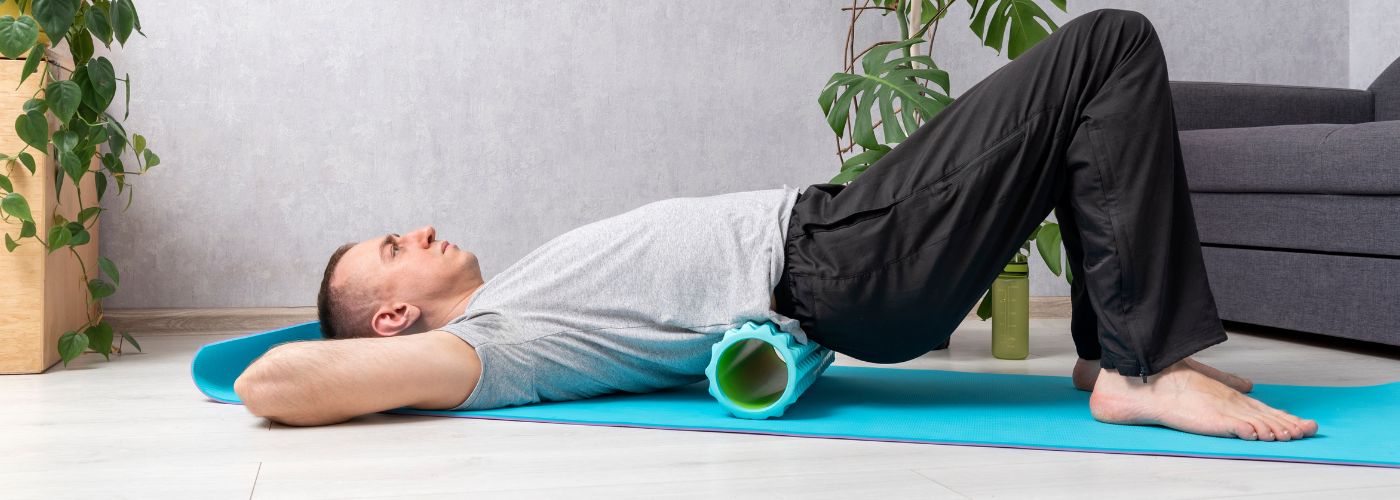Are you tired of dealing with back pain that seems to flare up every time you try to exercise? You’re not alone. Back pain can be a frustrating obstacle for those looking to stay active and fit. But fear not, we’ll explore the best low impact workouts for back pain. Strap in as we take a journey through the best low-impact workouts tailored for individuals seeking relief from persistent back issues.
What Is A Good Low Impact Workout For Back Pain?
One of the best low impact workouts for back pain is swimming. Swimming engages multiple muscle groups while providing support for the joints, making it a gentle yet effective exercise for strengthening the back muscles.
The buoyancy of water helps reduce the strain on the spine and allows for a wider range of motion. Swimming is also used by multiple physical therapists and healthcare professionals as a recommended exercise for individuals with back pain.
Additionally, the rhythmic nature of swimming can promote relaxation and stress relief, which can also be beneficial for managing chronic back pain. Remember to consult with a healthcare provider or physical therapist before starting any new exercise regimen, especially if you are experiencing existing back problems. They can also ensure that you don’t overtrain your body.
Popular Low Impact Yoga & Pilates Workouts
Yoga and Pilates are renowned for their ability to strengthen the core, improve flexibility, and alleviate lower back pain without causing unnecessary strain on the body. Two popular low-impact exercises that specifically target the lower back are the Cat-Cow stretch in yoga and the Pilates Pelvic Tilt.

The Cat-Cow stretch involves moving between a rounded spine (Cat) and an arched spine (Cow), which helps to increase mobility in the spine and release tension in the lower back.
Another effective exercise is the Pilates Pelvic Tilt, which focuses on engaging the deep abdominal muscles to support the lower back. By lying on your back with knees bent, you can gently tilt your pelvis towards you while engaging your core muscles.
This movement not only strengthens the core but also improves spinal alignment and stability, ultimately reducing strain on the lower back. Incorporating these low-impact exercises into your routine can help build a strong foundation for a healthy back while promoting overall relaxation and well-being.
Low Impact Band Exercises For Back Pain
One effective low-impact band exercise for back pain is the seated row. This exercise helps to strengthen the muscles in your upper back and improve posture.
To perform this exercise, sit on the floor with your legs straight and loop a resistance band around your feet. Hold one end of the band in each hand, then pull the bands towards your chest as if you are rowing a boat.
Another beneficial band exercise for back pain is the lateral pull down. This exercise targets the muscles in your upper back and shoulders, helping to reduce tension and improve flexibility.
To do this exercise, attach a resistance band to a high anchor point above you. Grab each end of the band with your hands and pull them down towards your sides while keeping your elbows slightly bent. Focus on engaging your core muscles throughout the movement to support your lower back and prevent strain.
Overall, these are some of the best low impact workouts for back pain. Be sure to wear a protective back belt when doing these belts as they provide support.
Benefits of Working Out For Pain Management
Regular physical activity can effectively alleviate chronic pain by releasing endorphins, the body’s natural painkillers. Exercise also strengthens muscles and joints, reducing the risk of injury and providing better support for the body.

Moreover, working out promotes blood circulation, delivering essential nutrients to damaged tissues and aiding in their healing process.
In addition to physical benefits, exercise has been shown to improve mental health by reducing stress and anxiety levels. This dual impact on both physical and mental well-being can significantly enhance overall quality of life for individuals dealing with chronic pain conditions.
Developing a consistent workout routine tailored to one’s abilities and preferences can empower individuals to take control of their pain management journey and improve their resilience in facing daily challenges.
How Long Should A Low Impact Workout Be?
When it comes to low impact workouts for back pain, the duration is just as important as the intensity. A common recommendation is to aim for at least 30 minutes of moderate exercise per day, which can be broken down into shorter sessions if needed.
However, it’s essential to listen to your body and adjust the length of your workout based on how you feel that day.
Some experts suggest that low-impact workouts should ideally last between 45 minutes to an hour for optimal results, allowing enough time for proper warm-up, workout, and cooldown. It’s crucial to focus on quality over quantity when it comes to low-impact exercises, ensuring each movement is performed correctly and with proper form.
Always consult with a doctor about any injuries or chronic pain you may be experiencing. They can provide you with a detailed plan and program to get your health back on track.
How Many Times To Workout?
When it comes to working out, the frequency of your exercise sessions can greatly impact your results. While some people swear by daily workouts, others find that taking rest days in between is more beneficial for their bodies.
For beginners, starting with 3-4 workouts per week is a good baseline to build strength and endurance gradually. As you progress, you may increase the frequency if your body feels strong and energized.
However, listening to your body is crucial – pushing yourself too hard can lead to burnout or injury. Remember that rest days are just as important as workout days for recovery and muscle repair.
Finding the right balance in your workout routine may require some trial and error. Experiment with different frequencies and listen to how your body responds. One accessory that may speed your recovery is using a TENS device.

Related Stories
Pickleball vs. Tennis: The Science of Recovery
For years, tennis was the stand-in for movement: endurance, coordination, and power all at once....
Oct
5 Ways to Support Bone Strength with HiDow
World Osteoporosis Day (October 20) October 20 is World Osteoporosis Day, and chances are, you’ve...
Oct
FDA-Cleared Is a Flex. Here’s Why.
Pulling Back the Curtain You’ve seen it on boxes, on websites, in ads: FDA-cleared. It...
Sep
This Is Fibro. This Is Larry.
September is Pain Awareness Month. And we’re not here to give you medical definitions or...
Sep
Train Your Relaxation Reflex
How often do you find yourself struggling to switch off after a long day? With...
Aug
Back To School Fitness: Balancing Academics & Athletics
Most student athletes don’t have a motivation problem. They show up. They train hard. They...
Aug